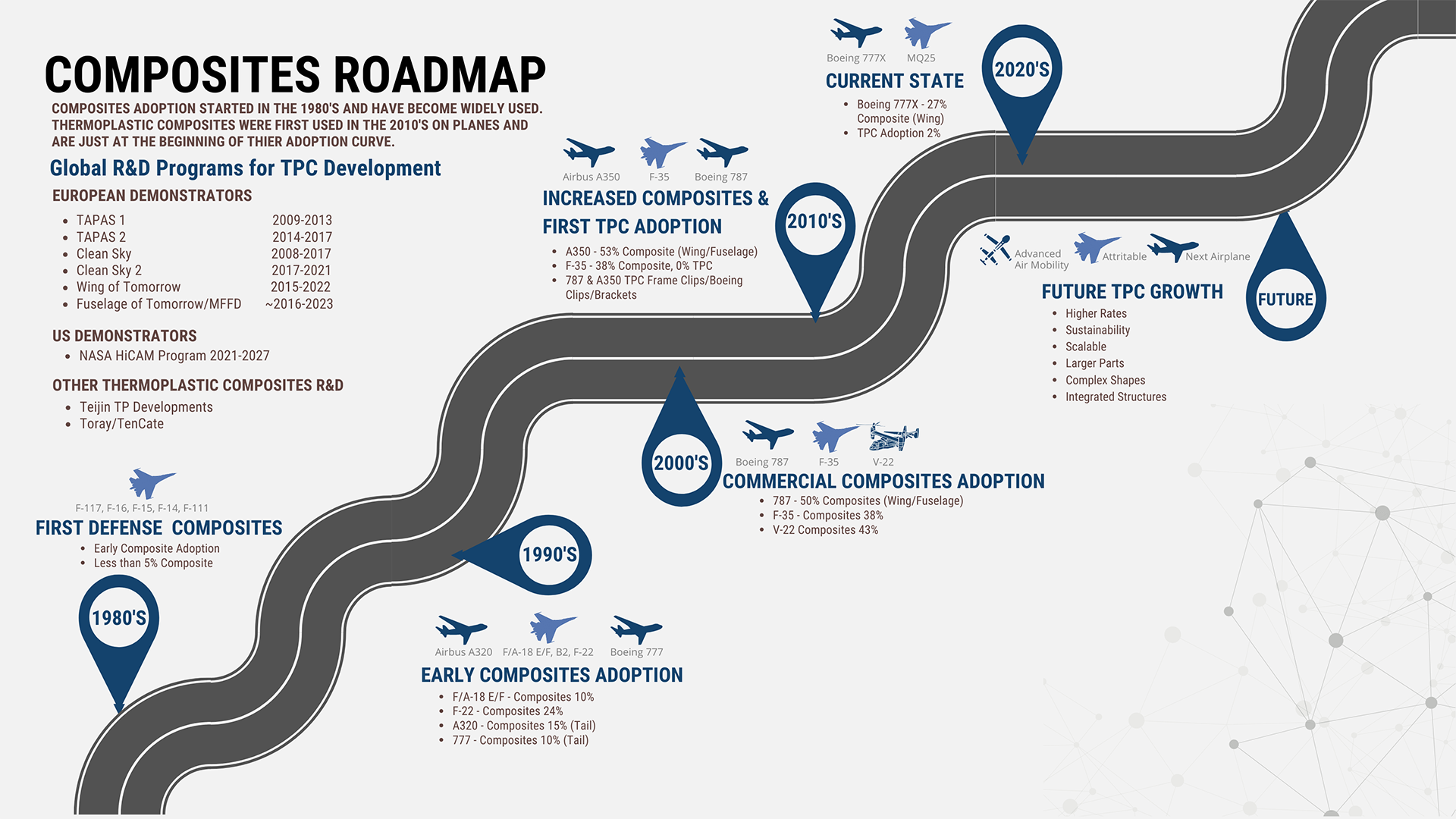Frequently Asked Questions
AAMMC Aerospace Tech Hub
Northwest is the center of the famous I-90 aerospace supply chain, with hundreds of aerospace suppliers already located in the region. In addition, many of the key composites suppliers are already located in the great Spokane area, making it an ideal place to build a consortium focused on advance materials manufacturing. Senator Cantwell, the sponsor of the bill that created the tech hubs program, has previously pointed to Spokane’s great potential for a technology hub under the Chips and Science Act.

The American Aerospace Materials Manufacturing Center is a designated regional technology hub that has applied for funding under the Regional Technology and Innovation Hubs Program from the Economic Development Administration.
EDA expects to announce phase 2 winners in summer of 2024, with funding distributed in fall of 2024. In April of 2024 they released updated overviews of each of the projects, which you can read here.
Our phase 2 application was for $72 million in federal funds, with $8 million in matching from industry. In addition, consortium members pledged an additional $70 million in in-kind contributions of time, resources, and additional financial commitments.
Our designation in permanent, and there will be multiple rounds of funding from EDA. In addition, the designation opens up the door for us to explore other avenues of funding through additional federal, state, local and private programs.
Over the last 40 years, composites have slowly become the material of choice for aerospace parts manufacturing, because they are both lightweight and strong, allowing aircraft to consume far less fuel. Thermoplastic composite materials are the next advancement, because not only are they lightweight and strong, but they can be manufactured at higher rates and are recyclable. Like composites 40 years ago, TPC’s are just at the beginning of their adoption curve and are expected to comprise much higher percentages of aircraft in 20 years.

The Chips and Science Act is a $250 billion investment in science, technology and manufacturing critical to U.S. national security, global economic leadership and supply chains. It was approved by the U.S. Congress in 2022, led by Senator Maria Cantwell. You can read more about it here.
31 tech hubs were designated under phase one of the Regional Technology Hub competition. Only these 31 established hubs can compete for funding during phase two. You can see the full list of designated hubs on the EDA’s website here. In addition, phase one designation is permanent, meaning designated tech hubs are eligible to apply for funding through federal, state, local and private programs to pursue their visions.
There are critical technologies and criteria outlined by the EDA and a very specific list of criteria here. Also, preference was given to programs that are likely to create jobs in underserved or underrepresented communities. 1/3 of the technology hubs must be established in EpSCOR states, to ensure the underserved criteria is met.
The center’s application would repurpose a 386,000 sq ft former manufacturing facility on 50 acres adjacent to the Spokane International Airport. This testbed will reflect an inclusive framework designed to expedite the evolution and commercialization of the domestic aerospace supply chain, foster education, attract robust entrepreneurial interest, and drive private sector investments into new companies.
As the industry strives to lower emissions, thermoplastic materials are needed to create aircraft that are lighter and more fuel efficient. Since U.S. manufacturers must look to foreign suppliers to find these materials, consortium members are aiming to create a more robust domestic supply chain and increase American competitiveness in the global market.
The EDA released a detailed document outlining the phase 2 application requirements. In short, the phase 2 application requires an overarching narrative, risk mitigation plan, and letters of commitment from tech hub members, plus specific proposals for 2-8 component projects along with budget requests for these projects. The component projects will be interwoven to make the hub successful and should include: workforce development, business and entrepreneur development, technology maturation, and infrastructure/construction.
